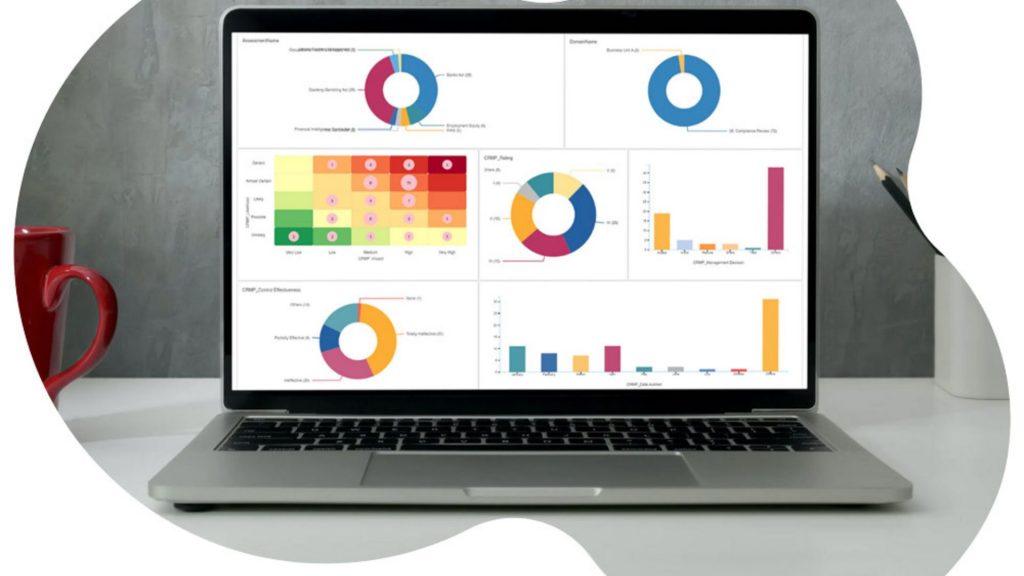The benefits of ERM to the organization. An organization must identify potential future challenges and adapt to meet these challenges. It must make decisions while understanding the opportunities to create value and the threats that challenge the organization’s ability to do so. In short, it must combine enterprise risk management (ERM) procedures with strategy-setting and performance management processes to create value-added advantages.
Benefits Of ERM To The Organization
By considering all feasible possibilities, including positive and negative risk management elements, the organization may discover opportunities and distinct challenges associated with present and future prospects. For example, when the management of a locally-based food firm assessed potential risks to the business objective of long-term revenue growth, they discovered the company’s core consumers were becoming more health-conscious and changing their diet. This move showed that future demand for the company’s current products could be declining.
As a result, management identified methods to produce new goods and improve existing ones, allowing the company to maintain revenue from existing consumers (protecting value) while also generating extra revenue by appealing to a broader consumer base (creating value).
ERM is also integrated with other management procedures. Specializing actions are required for specific responsibilities, such as business planning, operations, and finance management. For example, an organization considering credit and currency risks may need to develop models and collect large amounts of data for analytics. Therefore, enterprise risk management could become effective by integrating enterprise risk management methods with an entity’s operating activities and understanding how risk may influence an entity overall rather than in a single area.
ERM also enables an organization to increase its capacity to recognize risks and implement appropriate solutions, resulting in more positive outcomes while avoiding negative surprises and associated costs or losses. For example, a manufacturing company that offers clients just-in-time parts for use in production would be fined if it fails to deliver on time. In response to this risk, the firm could review its internal shipping operations, including delivery times of day, usual delivery routes, and unplanned delivery fleet maintenance.
The information can be used to plan fleet repairs, schedule deliveries outside of peak times, and design alternatives to important routes. Recognizing that not all traffic delays are avoidable, it could develop mechanisms to notify clients of potential delays. In this scenario, management will increase performance by affecting risk within its control (production and scheduling) and responding to risks outside its direct control (traffic delays).
Every entity faces a myriad of risks that can impact many aspects of an organization.
Risk can sometimes originate in one part of an entity but affect another. Management must identify and manage these entity-wide risks to maintain and increase performance. For example, when an organization discovered it faced several risks in its trading activities, management responded by establishing a system to assess internal transaction and market data, which was supplemented by relevant external data.
The system gave a comprehensive overview of risks across all trading activity, with the option to drill down to departments, clients, and traders. It also provided the organization with the ability to assess the relative risks. The system matched the entity’s enterprise risk management criteria and enabled the organization to bring previously fragmented data together to respond to risks more efficiently.
The challenge for some organizations, however, is more about performance variability rather than surprises and losses. Performing ahead of schedule or exceeding expectations can be just as concerning as performing below expectations. For example, commuters will be just as annoyed if a bus or train departs ten minutes early as if it departs ten minutes late: both might cause them to miss connections. Transit schedulers include natural pauses into the schedule to manage such variability, and drivers are required to wait at designated stations until a specific time, regardless of when they arrive.
This helps to smooth out variations in travel times while improving overall performance and user perceptions of the transit system. In this case, ERM enables organizations to predict risks that will impact performance and to take steps to minimize disruption.
Obtaining detailed risk information enables management to analyze overall resource needs and optimize resource allocation. For example, a downstream gas distribution company recognized that its older infrastructure increased the likelihood of a gas leak occurring. The organization analyzed the risk across its distribution network by examining patterns in gas leak-related data. Following that, management devised a strategy to replace worn-out infrastructure and repair those components with remaining usable life. This strategy enabled the organization to retain the infrastructure’s integrity while investing significantly more resources over a longer period.
Consider, however, that the benefits of integrating enterprise risk management approaches with strategy-setting and performance management practices will differ depending on the organization. There is no one-size-fits-all solution for all entities. However, implementing ERM standards will often assist a business in meeting its performance and profitability objectives, and prevent or reduce resource loss.
Final Thoughts
The assessment of significant risks and the implementation of appropriate risk responses are the fundamental elements of ERM. Acceptance or tolerance of a risk; avoidance or termination of a risk; risk transfer or sharing via insurance, a joint venture, or other arrangement; and risk reduction or mitigation via internal control procedures or other risk prevention activities are examples of risk responses.


